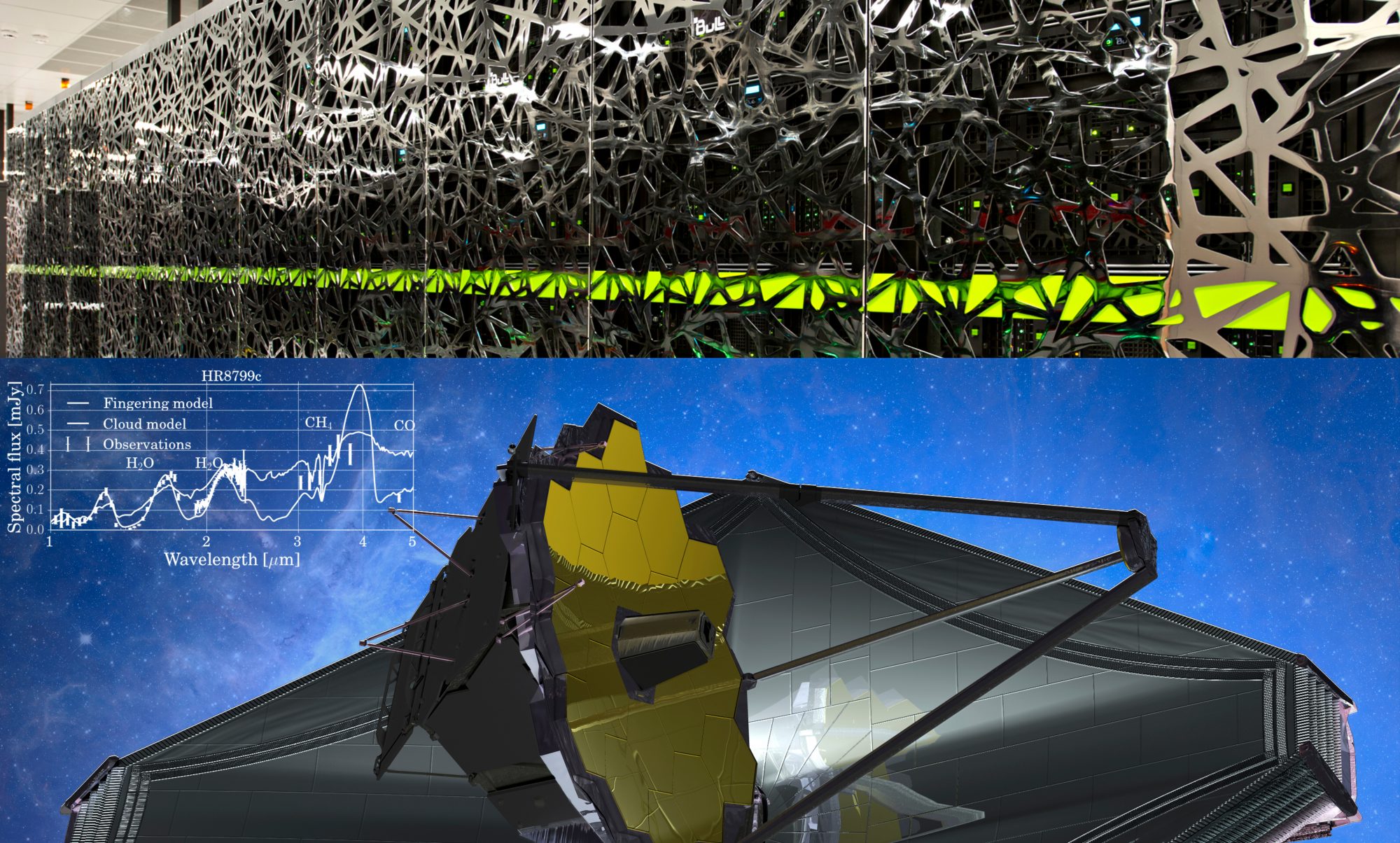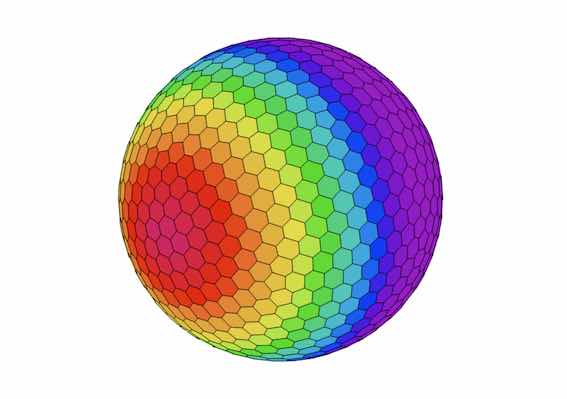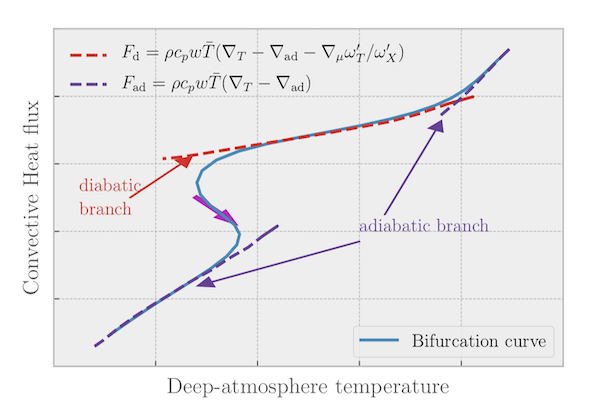By adapting the 3D general circulation model DYNAMICO developed at LSCE to the study of exoplanets, we have shown that the unexplained radius inflation of Hot Jupiters is the result of the long timescale meridional circulations that heat up the deep atmosphere. Thanks to the increased performances of the code and by using low resolutions (similarly to paleo-climate studies for Earth climate), simulations on a timescale of 1000 years (usual runs in the literature used a timescale of ~1 year) demonstrate that the deep circulations induced by the irradiation in the outer atmosphere are sufficient to confine the heat in the interior of the planet and keep it “puffy”. The full article detailing these simulations, and our analysis of the results, is available online as part of Issue 632 (December 2019) of Astronomy and Astrophysics.
A general theory for adiabatic and diabatic thermo-compositional convection
By generalizing the theory of convection to any type of thermal and compositional source terms (diabatic processes), we show that thermohaline convection in Earth oceans, fingering convection in stellar atmospheres, and moist convection in Earth atmosphere are deriving from the same general diabatic convective instability. We show also that ”radiative convection” triggered by CO/CH4 transition with radiative transfer in the atmospheres of brown dwarfs is analog to moist and thermohaline convection. We derive a generalization of the mixing length theory to include the effect of source terms in 1D codes. We show that CO/CH4 “radiative” convection could significantly reduce the temperature gradient in the atmospheres of brown dwarfs similarly to moist convection in Earth atmosphere thus possibly explaining the reddening in brown-dwarf spectra. By using idealized two-dimensional hydrodynamic simulations in the Ledoux unstable regime, we show that compositional source terms can indeed provoke a reduction of the temperature gradien. The L/T transition could be explained by a bifurcation between the adiabatic and diabatic convective transports and could be seen as a giant cooling crisis: an analog of the boiling crisis in liquid/steam-water convective flows.
This mechanism with other chemical transitions could be present in many giant and earth-like exoplanets. The study of the impact of different parameters (effective temperature, compositional changes) on CO/CH4 radiative convection and the analogy with Earth moist and thermohaline convection is opening the possibility to use brown dwarfs to better understand some aspects of the physics at play in the climate of our own planet.


